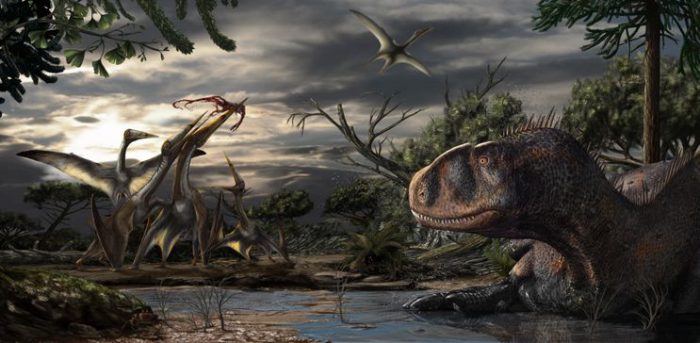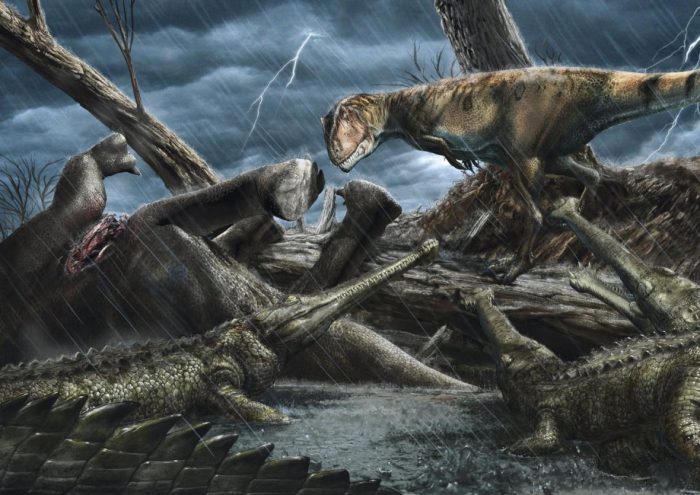Whether in movies or in books, the age of dinosaurs is rarely shown as a safe place. And with good reason.
Animals grew to enormous sizes—and quite a few of them ate meat.
But 100 millions years ago in today's Sahara Desert, there was place that really stood out as deadly. It was a super predator zone—a place of not just enormous meateaters, but an enormous variety of meateaters. Whether on land, in the water, or in the air, there were a bunch of chompy mouths waiting.
Some paleontologists are saying it was the most dangerous place in the history of Earth! Yikes!
Cancel my trip to the Cretaceous Sahara...

Just another day in the super predator zone? (Davide Bonadonna)
This discovery comes from new fossil research in an area on the Algeria-Morocco border called the Kem Kem Group. These ancient rocks date back 100 million years to the middle of the Cretaceous period. At this time, the area was a fertile river system that emptied out into an ocean.
And what do the fossils show? Three of the largest land meateaters ever, including the eight-metre tall Carcharodontosaurus and Deltadromeus. There were also giant crocodiles and Spinosaurus patrolling the rivers, not to mention fish that could eat us whole. Huge-winged pterosaurs swooped overhead.
And what did these animals eat?
That's a very good question. Because while the fossils do show some planteaters, there's not as many as you would expect.
Keeping the balance
Predators and prey need to be balanced for an ecosystem to stay healthy. (Getty Embed)
Nearly all of Earth's land ecosystems have something in common—there are more prey animals than predators. This is because if there are too many predators, they will eat so many of the prey that those animals die out. And that pretty much cancels dinner!
No matter how scary dinosaurs can seem to us, most prehistoric ecosystems were likely similar to modern ones. So predators existed, but so did enormous herds of docile herbivores. If T-rex was the lion of the past, hardosaur was the wildebeest the lion eats.
Different rules?
But the super predator zone shown by the Kem Kem Group fossils doesn't look like this. There are fossils of everything from sauropods (long-necked dinos) to small amphibians, but there are far less of these prey animals than in most fossilized habitats. It's mostly big meateaters.
It is possible that the fossils just aren't showing the whole picture. But what if this really was the most dangerous ecosystem ever? Ultimately, paleontologists are going to have to keeping digging for the truth.
For now though, it is a reminder that prehistoric life was full of surprises!
 "Oops! Didn't mean to set my time machine to this moment..." An illustration of a Carcharodontosaurus eyeing a kill in the ancient Sahara. (Davide Bonadonna)
"Oops! Didn't mean to set my time machine to this moment..." An illustration of a Carcharodontosaurus eyeing a kill in the ancient Sahara. (Davide Bonadonna)










so cool 😀 😀 😀 😀 😀 😀 😀 !
Gee whiz,that’s scary! 😯